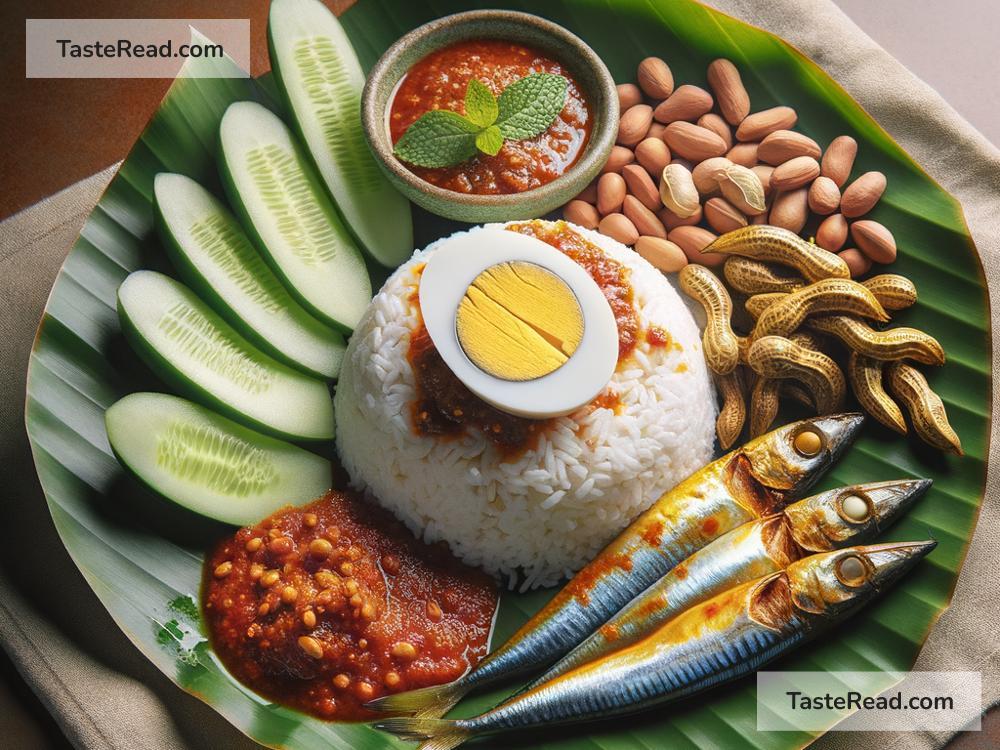Discovering the Delicious Journey of Malaysia’s Nasi Lemak
Malaysia, a melting pot of cultures, offers a smorgasbord of mouthwatering dishes, each telling its unique story. Among these, Nasi Lemak holds a special place in the hearts of Malaysians. This beloved dish, often considered the national dish, has evolved significantly from its humble origins to become a versatile meal enjoyed at any time of the day. Let’s delve into the delicious history and transformation of Nasi Lemak, exploring how it has become a symbol of Malaysian culinary pride.
Origins: A Simple Farmers’ Meal
Nasi Lemak’s roots trace back to the rice farming communities in Malaysia. Originating as a simple, nourishing meal for farmers to start their day, the name itself reveals much about the dish. “Nasi” means rice in Malay, while “Lemak” translates to creamy, referring to the rich, coconut milk-infused rice that is the cornerstone of this dish.
The original version was modest, comprising rice cooked in coconut milk and pandan leaves for fragrance, paired with a dollop of sambal (a spicy chili paste), crispy anchovies, roasted peanuts, and a hard-boiled egg. This combination provided the farmers with the necessary energy for their long and laborious day ahead.
Transformation: A Reflection of Malaysia’s Diversity
As Malaysia grew and diversified, so did Nasi Lemak. The dish began to mirror the multicultural tapestry of the country, incorporating various influences from the Malay, Chinese, Indian, and Indonesian communities. This fusion has led to numerous variations of Nasi Lemak, making it incredibly versatile and enjoyed by all, regardless of ethnic background.
Today, you can find Nasi Lemak served with an array of side dishes, from fried chicken, squid, or fish, to beef rendang (a slow-cooked meat dish) and even vegetarian options. The sambal, too, has seen countless variations, with some versions including tamarind for a tangy twist, while others might boast a shrimp or fish paste base, catering to different palates and preferences.
Serving Styles: From Banana Leaf to Gourmet Platings
The evolution of Nasi Lemak is not only limited to its ingredients but also how it is served. Traditionally, Nasi Lemak was wrapped in banana leaves, which imparted an additional aroma to the rice. This method made it a convenient packet for farmers or travelers to carry around easily.
As it transitioned from a breakfast staple to a meal enjoyed at any time, Nasi Lemak began to be served in different contexts. From roadside stalls and hawker centers offering quick and hearty servings, to upscale restaurants that deconstruct or reimagine the dish in gourmet forms, Nasi Lemak has proven its versatility. Some chefs have experimented with ingredients like quinoa instead of rice or added fusion elements, such as serving it with Japanese tempura, proving the dish’s ability to adapt and evolve.
Symbol of National Pride
Nasi Lemak’s journey from a farmers’ meal to a beloved national dish is a testament to its significance in Malaysia’s cultural and culinary landscape. It’s not just a dish; it’s a reflection of the country’s heritage, diversity, and innovation. The enduring popularity of Nasi Lemak underscores how food can bring people together, transcending cultural and social boundaries.
In 2017, Google even honored Nasi Lemak with a Doodle, further cementing its status as an iconic Malaysian dish. Whether served in its classic form or through contemporary interpretations, Nasi Lemak continues to be a source of national pride and a must-try for anyone visiting Malaysia.
Conclusion
The evolution of Nasi Lemak is a savory narrative of Malaysia’s history, culture, and communal harmony. It exemplifies how a simple dish can embody the essence of a nation, embracing change while maintaining its soul. Whether you’re savoring a traditional packet wrapped in banana leaf or indulging in a gourmet rendition, enjoying Nasi Lemak is an experience that connects you to the heart and soul of Malaysia. As the dish continues to evolve, one thing remains certain: Nasi Lemak will forever hold a cherished spot in the mosaic of Malaysian cuisine.


